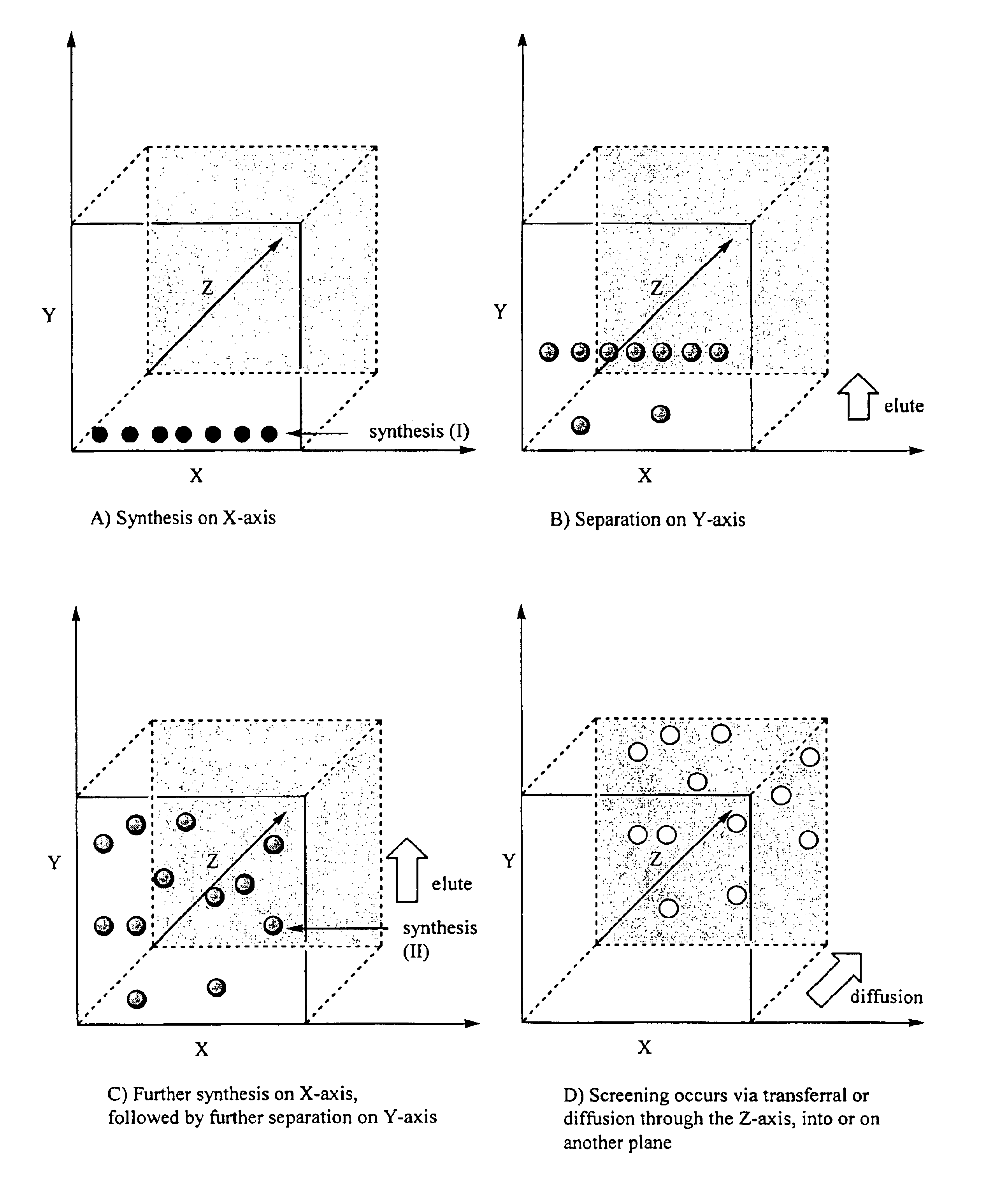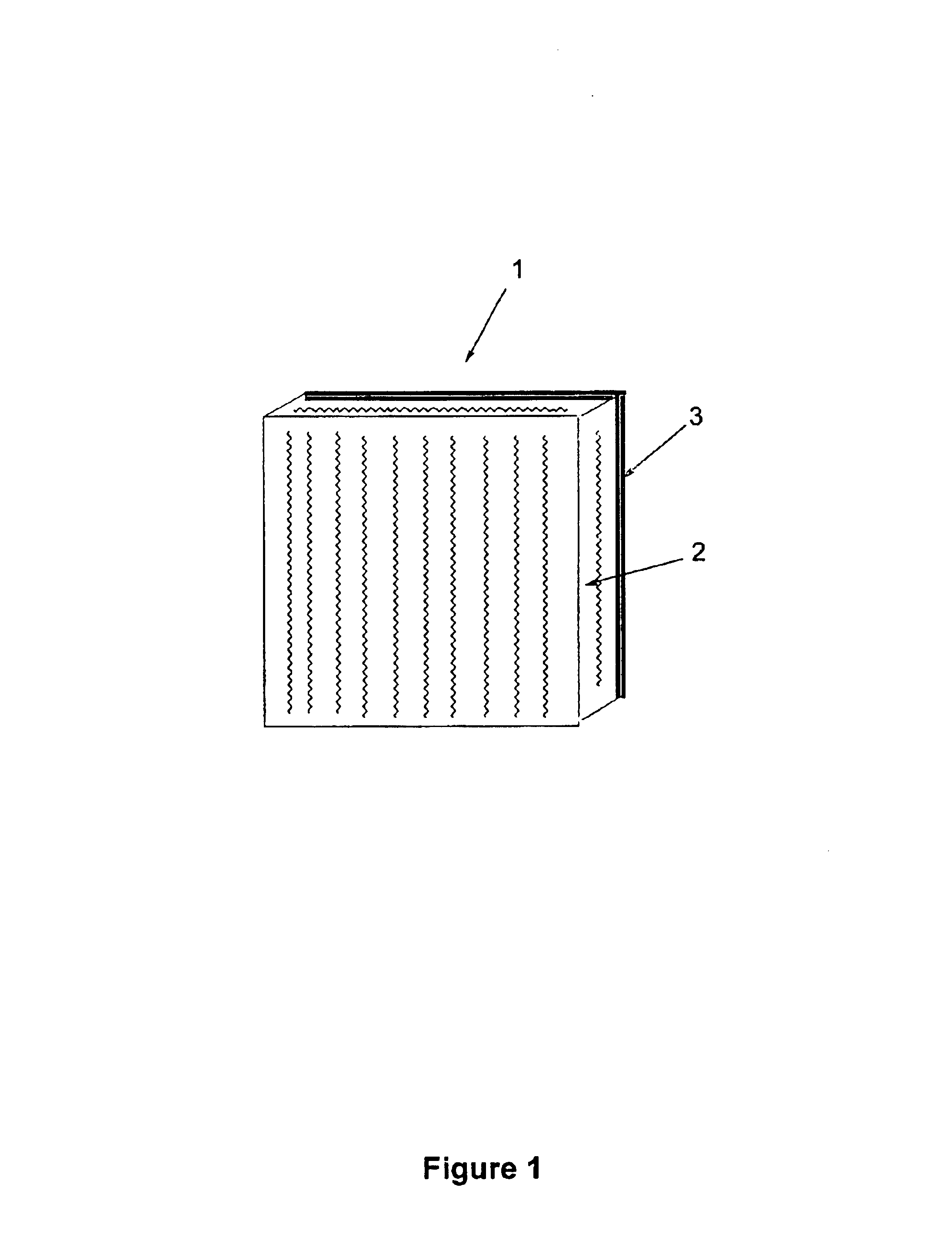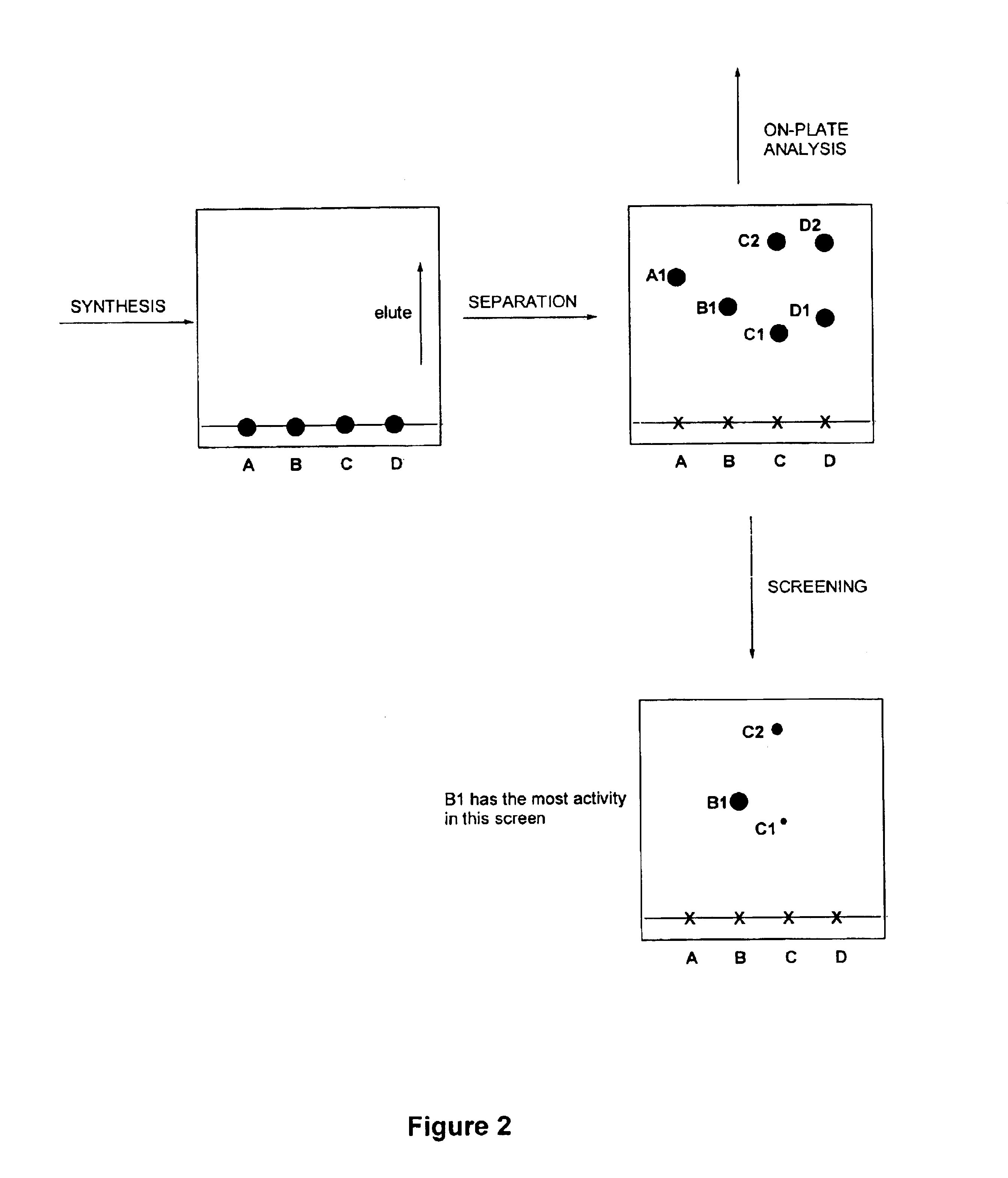Method for synthesis, separation and screening of a plurality of compounds in the same bulk of a stationary phase
a stationary phase, plurality technology, applied in the direction of library member identification, chemical/physical/physical-chemical process energy-based, peptides, etc., can solve the problems of unidimensional technique, no known method of combining, and restricted reactions involved to those applicabl
- Summary
- Abstract
- Description
- Claims
- Application Information
AI Technical Summary
Benefits of technology
Problems solved by technology
Method used
Image
Examples
example 1
Synthesis
5 μl, 0.06 mmol pyrrolidine was applied as a single spot to a plastic backed TLC plate (20×50 mm, 0.25 mm thick, Silica gel 60F254). 5 μl, 0.04 mmol benzyl bromide was then applied to the same area. In another experiment the reactants were applied to the plate in solution, e.g. as 0.1 M solutions in dichloramethane, and the solvent allowed to evaporate from the plate. The scheme below shows the reaction between pyrrolidine and benzyl bromide.
Separation
The TLC plate was eluted with 10% MeOH-CH2Cl2. The solvent was then allowed to evaporate from the plate. Spots were visualised in a nondestructive manner with ultra-violet light of wavelength 254 nm. Spots could also be visualised in a destructive fashion by derivatisation if necessary, e.g. by use of a ninhydrin staining reagent on a duplicate plate, and the product areas cross-correlated.
Optional analysis
Product spots could be analysed directly on the plate by mass spectrometry. Alternatively, the spots from a duplicate pla...
example 2
Synthesis in Parallel
A library of secondary and tertiary amines (FIG. 11) was synthesised in a parallel using the corresponding starting materials and the methodology described in Example 1. These were synthesised from primary and secondary amines (10 μl) by their reaction with 5 μl benzyl bromide on an aluminium backed TLC plate (50×50 mm, 0.25 mm thick, Silica gel 60F254). The primary amines afforded a mixture of both secondary and tertiary amine products that could be screened simultaneously in the same assay. After synthesis the products were separated by elution as in Example 1B. Analysis and screening were similarly performed as before. The reaction schemes are shown below.
example 3
(i) Microwave Assisted Parallel Synthesis
A library of piperazines (FIG. 12) was synthesised in a parallel and similar fashion to that in Example 1. These were synthesised from 1-arylpiperazines. 100 μl of a 1 mmol solution of 1-arylpiperazines in CH2Cl2 or DMSO were reacted with 50 1 μl of a 1 mmol solution of benzyl halide derivatives in CH2Cl2 or DMSO. Reactions were optimised in this case by use of microwave radiation. After application of reagents onto a glass-backed TLC plate (100×100 mm, 2 mm thick, silica gel 60F254), the plate was placed in a domestic microwave oven (Electrolux NF4884). The plate was irradiated at about 585 W for 5 min to facilitate reaction. A beaker of 50 mL water was placed near the plate to act as a heat sink. The water absorbs a portion of the microwave energy and is used to fine tune the energy absorbed by the reactions. After cooling of the plate, the products were separated and screened as in Example 1 yielding products that showed growth inhibition ...
PUM
| Property | Measurement | Unit |
|---|---|---|
| Thickness | aaaaa | aaaaa |
| Area | aaaaa | aaaaa |
| Biological properties | aaaaa | aaaaa |
Abstract
Description
Claims
Application Information
 Login to View More
Login to View More - R&D
- Intellectual Property
- Life Sciences
- Materials
- Tech Scout
- Unparalleled Data Quality
- Higher Quality Content
- 60% Fewer Hallucinations
Browse by: Latest US Patents, China's latest patents, Technical Efficacy Thesaurus, Application Domain, Technology Topic, Popular Technical Reports.
© 2025 PatSnap. All rights reserved.Legal|Privacy policy|Modern Slavery Act Transparency Statement|Sitemap|About US| Contact US: help@patsnap.com



